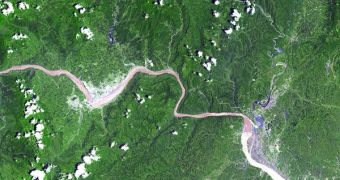The Xinhua official Chinese press agency has announced on Monday another breath-taking water diversion project that is meant to bring drinking water to the southwestern regions of the countries, which are prone to severe drought. Some 412,000 people will benefit from the project, as will nearly 651,400 acres of lands, which are the main source of income for farmers and animal growers. The scale of the project is massive, although the costs don't come anywhere near the enormous $20 billion bill that the authorities had to pay for the Three Gorges Dam water retention program.
A large canal will be built in the Guizhou province, which will divert water from nearby plentiful water sources to the threatened region of the country. The construction will be curved, and will feature a length of 40 miles (63 kilometers), as well as a 162.5 meter (533 feet) dam, that will also provide regulation to the water flow, alongside electricity-generating capacities.
The entire project is estimated to cost around $907 million, which is next to nothing compared to Three Gorges. However, there are great engineering and technological difficulties in the way of this project being completed successfully. "The difficulties in the canal's construction, such as the curved design, the huge dam and a series of long aqueducts and tunnels in geologically complicated areas make the project the most difficult," the report said.
Chinese media described the project as "The most difficult hydro works in history." Indeed, coping with ever-changing terrain types, ranging from mountains to hill sides and flats is no easy task, even for the most skilled engineers. Massive digs will have to be errected, in order to ensure a steady flow of water and an uninterrupted supply to the people who need it.
In addition to this enterprise, China is currently also working on the South-North Water Route, another massive project designed to bring water from the central Hubei province directly to the capital city of Beijing, as well as to other northern parts of the country, where steady flow is a problem and locals are subjected to restrictions on how much water they can use on a daily basis.

 14 DAY TRIAL //
14 DAY TRIAL //